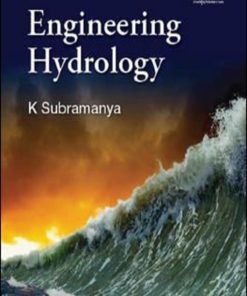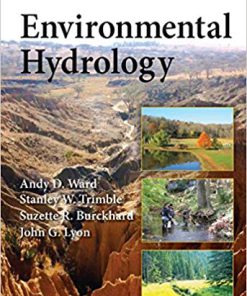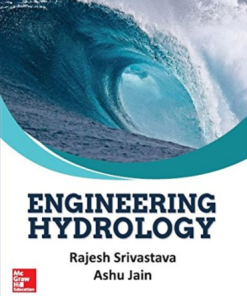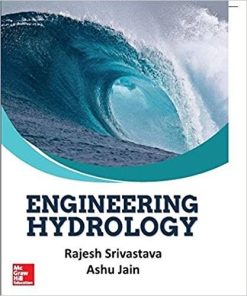(eBook PDF) Physical Hydrology 3rd Edition
$50.00 Original price was: $50.00.$35.00Current price is: $35.00.
(eBook PDF) Physical Hydrology 3rd Edition – Instant Download
(eBook PDF) Physical Hydrology 3rd Edition – Digital Ebook – Instant Delivery Download
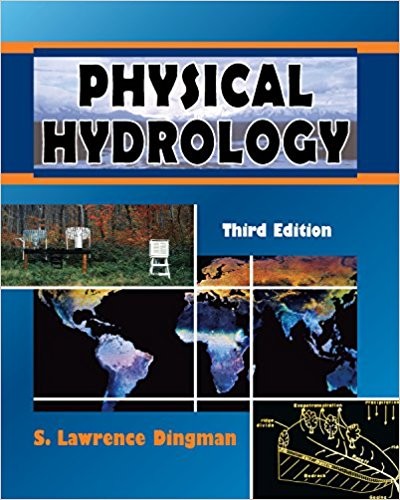
Product details:
- ISBN-10 : 1478611189
- ISBN-13 : 978-1478611189
- Author: S. Lawrence Dingman
For twenty years, Lawrence Dingman’s well-written, comprehensive Physical Hydrology has set standards for balancing theoretical depth and breadth of applications. Rich in substance and written to meet the needs of future researchers and experts in the field, Dingman treats hydrology as a distinct geoscience that is continually expanding to deal with large-scale changes in land use and climate. The third edition provides a solid conceptual basis of the subject and introduces the quantitative relations involved in answering scientific and management questions about water resources. The text is organized around three principal themes: the basic concepts underlying the science of hydrology; the exchange of water and energy between the atmosphere and the earth’s surface; and the land phase of the hydrologic cycle. Dingman supplies the basic physical principles necessary for developing a sound, instructive sense of the way in which water moves on and through the land; in addition, he describes the assumptions behind each analytical approach and identifies the limitations of each.
Outstanding features include: An examination of documented trends in global change of climatic and hydrologic quantities; statistical and measurement methods for the development and management of hydrologic simulation modeling; additional exercises that emphasize analyses using data sets obtained via the Internet; and Excel spreadsheets on the accompanying CD.
Table contents:
- The Hydrologic Cycle, Water Resources, and Society
- The Water, Food, Industry, Population Growth Nexus
- The Hydrologic Cycle
- Water Resources in the United States
- The Importance of Hydrology to Society
- Modeling the Hydrologic Cycle
- Hydrologic Data Analysis
- Advantages and Disadvantages of Modeling Data
- Typical Model Architecture
- Problems
- Precipitation
- Introduction
- Causes of Precipitation
- Precipitation Events
- Measurement of Precipitation
- Storm Time Trends
- Average Precipitation over an Area
- Rainfall Frequency Distributions
- Probability of an Event Occurring
- Rainfall Erosivity
- Climate Change and Uncertainty
- Problems
- Infiltration and Soil Water Processes
- Introduction
- Soil Water Relationships
- Infiltration and Soil Water Retention
- Factors Affecting Water Movement into and through Soils
- Soil Water Balance
- Estimating Infiltration Rates
- Perspective on Infiltration Methods
- Measurement of Soil Properties
- Problems
- Soil Moisture and Evapotranspiration
- Introduction
- Evaporation Process
- Evapotranspiration From Soil and Plants
- Measuring Evaporation or Evapotranspiration
- Weather Data Sources and Preparation
- Estimating Evaporation and Evapotranspiration
- Advances in Estimating Crop Evapotranspiration
- Evapotranspiration and Soil Water Budgets in Space and Time
- Using Evapotranspiration Data and Management Strategies
- Problems
- Runoff and Drainage
- Introduction
- Factors Affecting Runoff Processes
- Watershed Factors that Affect Runoff
- Runoff Characteristics: The Hydrograph
- Predicting Volume of Stormflow and Total Runoff
- Prediction of Peak Runoff Rate
- Stormwater Hydrographs
- Assessment and Application of Flood Estimation Techniques
- Agricultural Land Drainage Modifications
- Determining Subsurface Drainage Flows
- Flow Duration and Water Yield
- Planning for Low Flow Water Shortages
- Runoff Characteristics–Pollutograph
- Problems
- Stream Processes
- Introduction
- Interaction of Streams with the Landscape
- Stream Orders
- Stream Biota
- Stream Characteristics
- Stream Stability and Sediment Transport
- Meander Migration, Floodplains, and Streamways
- Stream Classification
- Channel Evolution
- What to Measure and Why the Measurement Should Be Made
- Some Other Important Factors
- Stream Restoration
- Problems
- Uniform Open Channel Flow
- Introduction
- Flow Velocity and Discharge
- Grassed Waterways
- Compound Channels
- Two-Stage Agricultural Ditches and Canals
- Other Compound Channel Applications
- Modifying, Managing, and Enhancing Constructed Channel
- Problems
- Hydraulic Control Structures
- Introduction
- Specific Energy and Critical Discharge
- Riffles, Pools and Runs (Based on Newbury et al, 2011 with permission from the
- American Geophysical Union)
- Weirs, Flumes, and Culverts
- Backwater Analysis
- Rock Structures
- Sizing Rock
- Routing flows through Channels and Rivers
- Routing flow through Reservoirs
- Problems
- Soil Conservation and Sediment Budgets
- Introduction
- Factors Affecting Erosion by Water
- Types of Erosion
- Estimating Soil Loss and Soil Loss Tolerance
- Universal Soil Loss Equation
- Nonagricultural Applications of the USLE
- Downstream Sediment Yields
- Single-Event Sediment Yields
- Sediment Budget Concepts
- Sediment Storage in Large Reservoirs
- Problems (Note: The first 7 problems relate to Equation 9.1)
- Hydrology of Forests, Wetlands, and Cold Climates
- Introduction
- How are Forests Different?
- Forest Climates: Rain and Snow
- Interception: Rain, Snow, and Fog
- Energy Balance in Forests
- Evapotranspiration
- Snowmelt
- Infiltration
- Subsurface Flow (Interflow)
- Surface Runoff
- Streamflow and Watershed Hydrology
- Erosion: Sediment Budget
- Deforestation, Fires, and Silviculture
- Rangelands and Grazing
- Wetlands
- Problems
- Hydrogeology
- Introduction
- Characterization of Groundwater Flow
- Groundwater Flow Patterns and Stream Interaction
- Flow to Wells
- Capture Zones of Wells
- Fracture Flow
- Groundwater Vulnerability
- Problems
- Human Impacts on Water Resources: Prevention and Treatment Strategies
- Introduction
- Human Impacts on Stream Health
- Flood Forecasting and Management
- Urban Impacts
- Conundrum of Understanding Discharge Frequency
- Reducing Runoff from Urban Areas
- Detention and Retention Ponds
- Agricultural Impacts on Water Quality
- Agricultural Water Quality Best Management Practices
- Landfills
- Problems
- Fundamentals of Remote Sensing and Geographic Information Systems for Hydrologic
- Applications
- Introduction
- Products
- Parts of the Spectrum and Radiation Characteristics
- Data Types and Databases
- Remote Sensing Characteristics of Water
- Applications
- Practical Exercises on Conducting and Reporting Hydrologic Studies
- Introduction
- Conducting a Hydrologic Study
- Reporting a Hydrologic Study
- Report Contents
- General Guidelines for Preparing Exercise Reports
Exercise 14.1: Precipitation (See Theory in Chapter 2)
Exercise 14.2: Evaporation (See Theory in Chapter 4)
Exercise 14.3: Runoff (See Theory in Chapter 5)
Exercise 14.4: Flow Duration (See Theory in Chapter 5)
Exercise 14.5: Storm Runoff, Totals, and Peaks (See Theory in Chapter 5)
Exercise 14.6: Erosion and Elementary Sediment Routing (See Theory in Chapter 9)
Exercise 14.7: Streamflow Measurement in the Field (See Theory in Chapter 7)
Exercise 14.8: Watershed or Drainage Basin Morphology (See Theory in 6)
Exercise 14.9: The Practical use of Soil Surveys for Environmental Management
The Practical use of Soils Maps for Management
References
Appendices
Index
People also search:
physical hydrology 3rd edition pdf
physical hydrology 3rd ed
physical hydrology third edition 3rd edition
what are the 3 areas of physical development
what are the three areas of physical development
physical hydrology pdf
You may also like…
Calculus and Math
Engineering - Hydraulic Engineering
Engineering
Earth Sciences - Hydrogeology
Engineering Hydrology 1st Edition Rajesh Srivastava – eBook PDF







